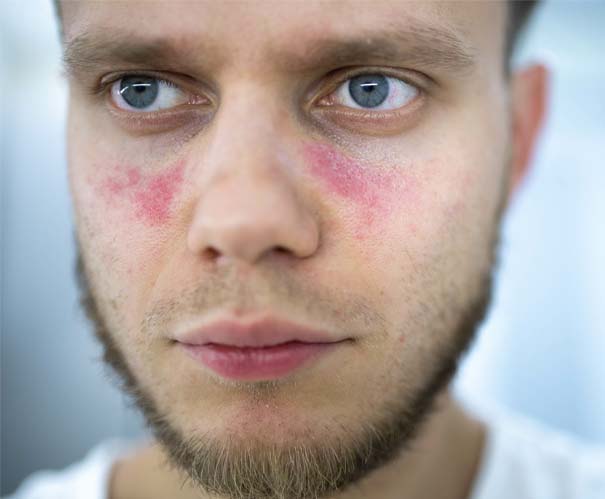
Cutaneous lupus
Overview:
Cutaneous lupus erythematosus (CLE) is an autoimmune skin condition which may appear as a widespread rash, sores in the mouth or nose, an increased sensitivity to the sun, red scaly plaques with scarring or as a facial rash known as a “butterfly rash”. When this autoimmune disease attacks internal organs such as the joints, kidneys or lungs it is called systemic lupus erythematosus (SLE). However, the majority of patients with cutaneous lupus have only skin involvement.
Subtypes:
The most common subtypes of cutaneous lupus are discoid lupus (DLE) and subacute cutaneous lupus (SCLE). Discoid lupus presents with red, thickened patches of skin, often with scarring, on the head and neck. Subacute cutaneous lupus is characterized by red, scaly ring-like patches on sun-exposed skin. Acute lupus (ACLE) presents as a red rash on both cheeks often known as a butterfly rash.
Causes:
Cutaneous lupus may be triggered by ultraviolet light (either from natural sunlight or tanning beds), infections, medications and stress
Diagnosis:
The diagnosis is a clinical diagnosis but can be confirmed by performing a skin biopsy. Lab work is usually ordered to make sure there is no involvement of the internal organs.
Treatment and Prevention:
Sun protection and sun avoidance are very important for the patient with cutaneous lupus. Patients should avoid exposure to mid-day sun (10 AM-4 PM) when the ultraviolet light is most intense, wear sun-protective clothing and use a broad-spectrum sunscreen (covering both Ultraviolet A and B radiation) with a sun protective factor (SPF) of at least 30 or higher. It is also important for patients to stop smoking, as smokers tend to have more severe disease.
Treatments for cutaneous lupus include topical corticosteroid creams or ointments and injections of steroids into skin lesions. Medications used to treat malaria such as hydroxychloroquine (Plaquenil®), chloroquine and quinacrine may also have significant benefit for patients with cutaneous lupus. Other oral medications which affect the immune system such as prednisone, methotrexate, cyclosporine and mycophenolate mofetil or CellCept® are occasionally used for more widespread skin involvement.
Patients with cutaneous lupus should see their dermatologist regularly for treatment and to be monitored for the development of any systemic involvement.

